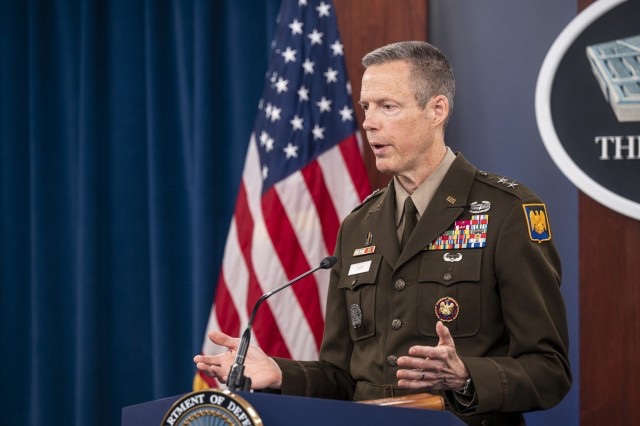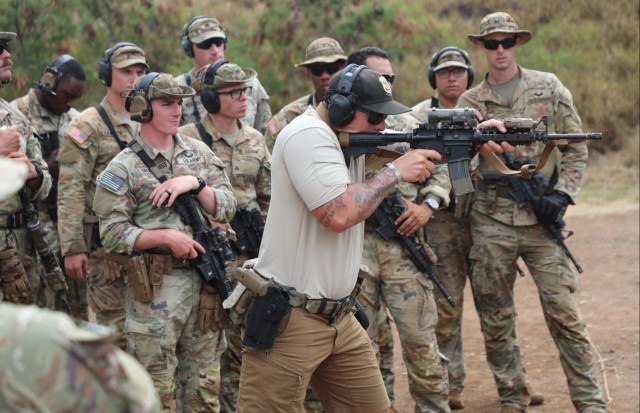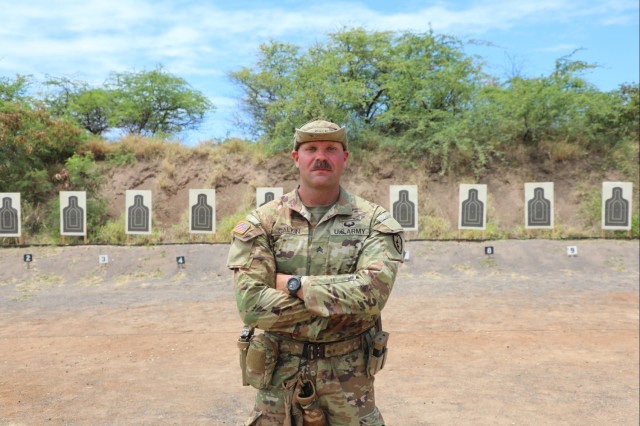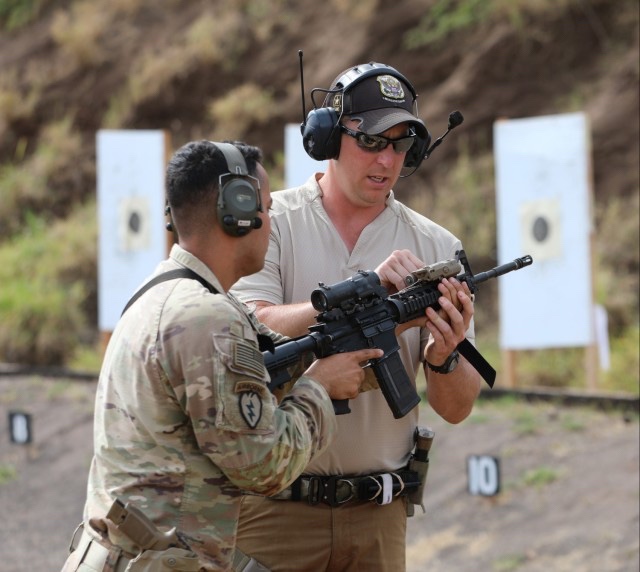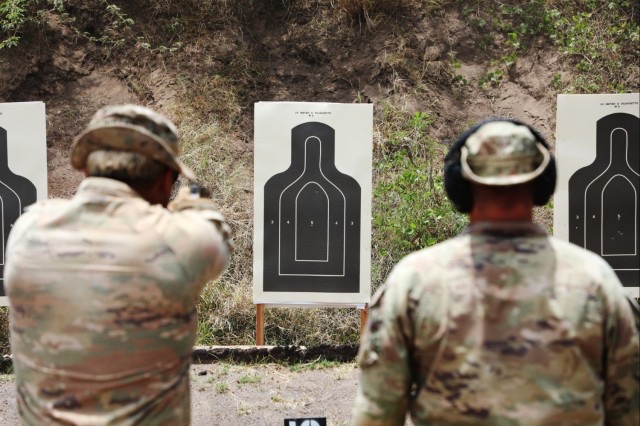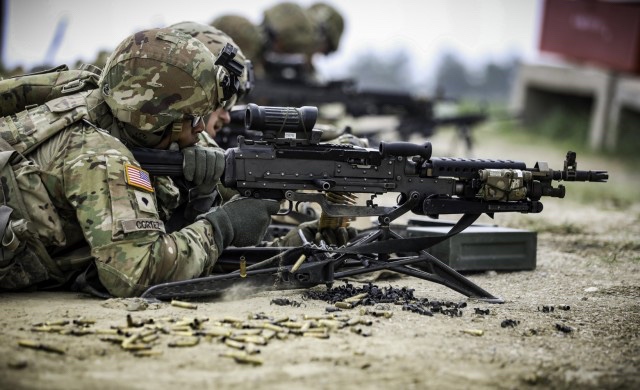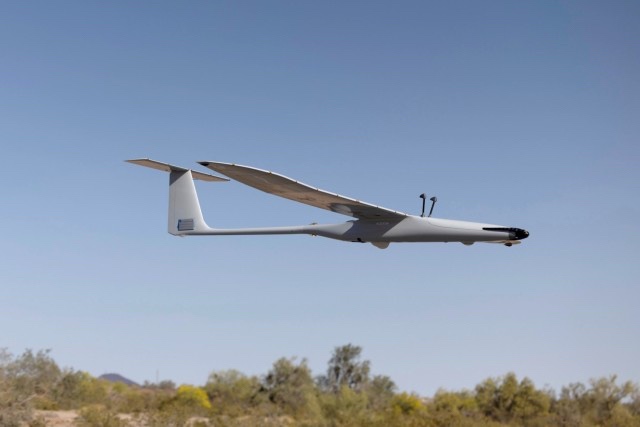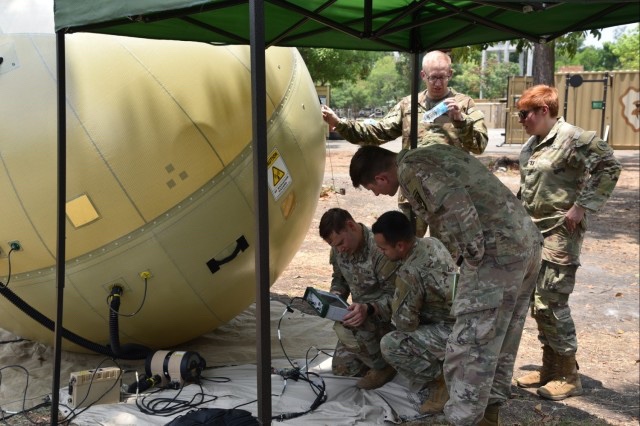
ROCK ISLAND ARSENAL, Ill. — If the nation requires a large-scale mobilization of troops, First Army and its enterprise partners must be ready to deliver.
With that in mind, First Army has joined with nearly a dozen of those partners for Pershing Strike 23, a deliberate command post exercise, which began July 25 and runs through August 4. The event incorporates mobilization exercises conducted at mobilization force generation installations and involves more than 3,000 personnel at several installations including: Rock Island Arsenal; Fort Riley, Kansas; Fort Stewart, Georgia; Camp Atterbury, Indiana; and Fort McCoy, Wisconsin.
Also participating are staff members from First Army Division East and First Army Division West, at Fort Knox, Kentucky and Fort Cavazos, Texas, respectively.
Bradley White, chief of the First Army Plans and Mobilization Division, said the exercise serves to “demonstrate First Army’s ability to provide the pre- and post-mobilization training and support that our Reserve component partners will require to successfully prepare for a deployment in support of a combatant commander.”
The process gives insight into the effort, coordination, and cooperation that would be required of First Army and its enterprise partners in event of a large-scale mobilization operation, or LSMO. Such operations are crucial to the nation’s defense, noted Col. Shawn Creamer, First Army director of operations.
“The Reserve component comprises 52 percent of the total Army and many of the key enabler capabilities resident within the Army — engineers, logistics units, military police, etc. — disproportionately reside within the Reserve Component,” he said. “The Army and the joint force rely on the Reserve component, our citizen Soldiers, to sustain our global operations and activities, and to advance U.S. national interests. Without the efficient and effective mobilization of a well-trained Reserve component, the Army cannot deliver land power when asked and the joint force cannot win when called.”
This statement speaks to the importance of holding the exercise. “We use training and exercises like Pershing Strike to both validate our current plans and test out new concepts,” Creamer said. “We press these plans and concepts to the breaking point, to see what works and what doesn’t. Out of this we can not only adjust our plans to correct identified shortfalls, but more importantly, articulate areas of risk to Army senior leaders.”
Being ready to fight is what the Army is all about, noted Rick Fink, First Army director of training and exercises. “LSMO is the reason there is an Army and Pershing Strike stresses our entire system,” he said.
During Pershing Strike 23, units and Soldiers are hit with an array of challenges they must respond to quickly and calmly. Injects, be they related to weather, personnel or logistics, force the participants to react and adapt.
It is a continually improving process, Fink said, adding that First Army and its enterprise partners have taken lessons learned from previous Pershing Strike exercises, refined them and applied them to today’s environment. That momentum will continue as input from this iteration will be applied going forward.
“We’ve seen what works and we see what changes we need to make and asked how can we do this better, more efficiently and quicker,” he said. “All the information we’re collecting, the purpose is to enable leaders to better understand what is happening on the ground. They are empowered with the best information to make the best decisions.”
Along those lines, White said key goals of Pershing Strike include establishing a shared understanding “of the sheer heavy lifting (required) by the entire mobilization enterprise to successfully execute LSMO” and identifying “critical gaps in the enterprises’ capability and capacity to support LSMO and work towards solutions.”
He added that Pershing Strike and its associated mobilization exercises also serve to increase readiness of the involved units: “By bringing together the critical mobilization enterprise partners and providing a representation of the workload and stress on the mobilization enterprise that would be experienced during a LSMO event, each unit, headquarters and the enterprise partners can flesh out their policies, processes and procedures required to execute mobilization operations.”
While most First Army personnel were doing their usual jobs during Pershing Strike, Col. Stew James stepped back from his role as senior advisor to the Army National Guard for Pennsylvania to serve as an observer coach/trainer during the exercise. He explained his responsibility in that capacity was to “observe processes and provide feedback. I take what they said they did well last year and make sure they’re still progressing. We want to expand our knowledge and not take a step back.”
That requires working toward a common goal. “It’s a team effort,” James said. “You have to crosspollinate that knowledge across the enterprise to make it efficient. By getting enterprise partners involved, we’re going to be better at knowing the problem sets that will appear if we have to do a large-scale mobilization. Every commander’s update brief and battle update brief, there is knowledge shared and that’s the benefit of this.”
It’s all geared toward First Army and its partners leaving the exercise better than when they started. “We should see growth,” James said. “Each iteration of Pershing Strike, we are gaining organizational knowledge and experience. Building that mobilization knowledge is critical so that we are solving new problems, not re-learning old problems.”
White emphasized the crucial role played by First Army’s enterprise partners, which include U.S. Army Forces Command, Installation Management Command, the Army National Guard, U.S. Army Reserve, U.S. Army Medical Command, U.S. Army North, U.S. Transportation Command, Army Sustainment Command, Army Materiel Command, U.S. Army Network Enterprise Technology Command and Military Surface Deployment and Distribution Command.
“Without the enterprise we will be unable to be successful at our mission of providing trained and validated (Reserve component) forces for the combatant commander,” he said. “Without the enterprise we can’t move our mobilizing units and their equipment to and through the [mobilization force generation installation] to the port. We can’t feed, billet or move our mobilizing units during post-mobilization training and without the enterprise support at our [mobilization force generation installations] our training brigades cannot execute their training and validation mission.”
While the exercise ends next week, the process will continue. Lessons learned will be taken back to respective installations, added to standard operating procedures, drilled on again and integrated into a system that will have First Army ready to deliver trained and ready troops if called upon.
By Warren W. Marlow


